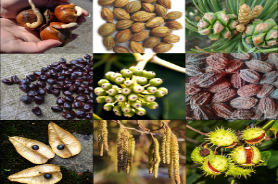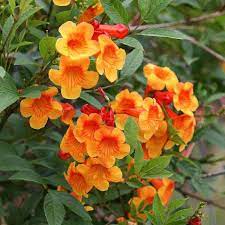Heliconia psittacorum, commonly known as Parrot’s Beak or Parakeet Flower, is a tropical flowering plant that belongs to the Heliconiaceae family. Native to Central and South America, this plant is celebrated for its striking and colorful inflorescences that resemble the beak of a parrot.
Here’s a detailed description of Heliconia psittacorum:
**Physical Characteristics:**
– **Leaves:** The leaves of Heliconia psittacorum are long, paddle-shaped, and arranged alternately along sturdy stems. They are usually dark green and have prominent veins.
– **Inflorescences:** The most remarkable feature of this plant is its unique inflorescences. These consist of bracts that vary in color and shape, resembling the plumage of tropical birds, particularly parrots. The bracts are often a combination of bright reds, yellows, and oranges, creating a vibrant and eye-catching display.
– **Flowers:** The actual flowers of Heliconia psittacorum are relatively inconspicuous and are usually found within the bracts. These flowers are usually tubular and come in shades of yellow or green.
**Cultivation:**
– **Sunlight:** Heliconia psittacorum thrives in full to partial sunlight. It prefers bright, filtered light rather than direct, harsh sunlight.
– **Soil:** Well-draining and fertile soil is essential for the healthy growth of Parrot’s Beak. It is recommended to use a soil mix rich in organic matter.
– **Watering:** This plant requires regular and consistent moisture. Keep the soil evenly moist, but avoid waterlogging, as it can lead to root rot.
– **Temperature and Humidity:** Heliconia psittacorum is a tropical plant and prefers warm temperatures and high humidity. It can suffer from damage in temperatures below 50°F (10°C).
– **Fertilization:** Regular feeding with a balanced, slow-release fertilizer can promote healthy growth and flowering. Fertilize during the growing season (spring and summer) according to the package instructions.
**Maintenance:**
– **Pruning:** Remove any dead or yellowing leaves and spent bracts to maintain the plant’s appearance and encourage new growth.
– **Pest and Disease Control:** Keep an eye out for pests like aphids, mealybugs, and spider mites. Maintaining good air circulation can help prevent these issues. Additionally, if the plant is not receiving enough light or has excessive moisture, it might be susceptible to fungal diseases.
**Uses:**
– **Ornamental Plant:** Heliconia psittacorum is widely used for ornamental purposes in tropical and subtropical landscapes, gardens, and as potted plants.
– **Cut Flowers:** The showy bracts of Parrot’s Beak make it a popular choice for cut flower arrangements and tropical-themed floral displays.
In summary, Heliconia psittacorum, or Parrot’s Beak, is a captivating tropical plant cherished for its vivid and distinctive inflorescences that resemble the beak of a parrot. It adds a touch of tropical beauty to gardens, landscapes, and indoor spaces where the necessary conditions can be provided for its growth.











Reviews
There are no reviews yet.